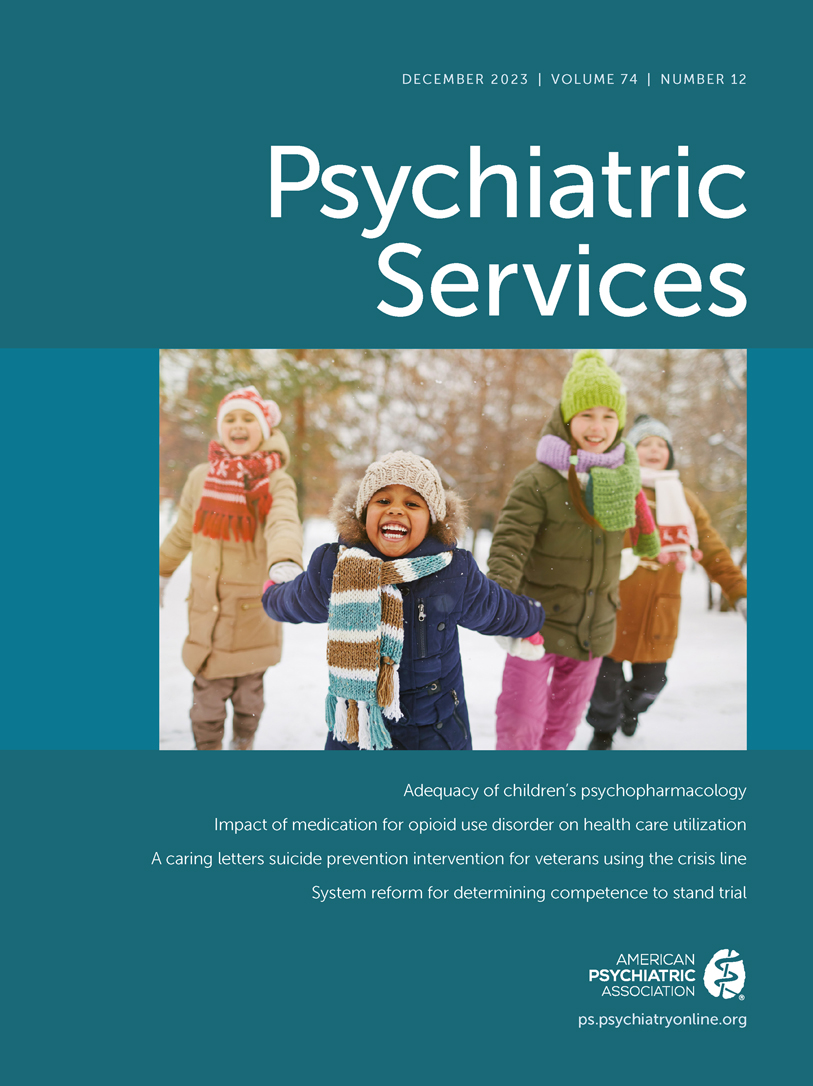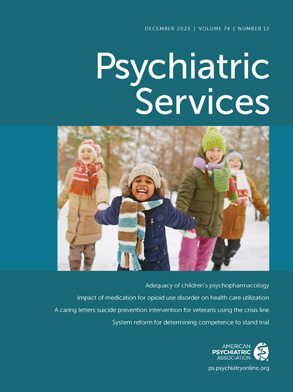Persons with serious mental illness (i.e., schizophrenia, bipolar disorder, or recurrent major depression) are three times more likely to smoke tobacco than are persons in the general U.S. population. Smoking is the strongest preventable risk factor for the 10- to 15-year shortened life span of persons with serious mental illness. Helping these smokers quit is an urgent and unmet need.
One way to reach smokers with serious mental illness is during a hospital admission. Hospitalized patients experience abstinence and can be introduced to counseling and cessation medications. However, most patients with serious mental illness do not follow through with cessation treatment referrals, and most return to smoking postdischarge.
This study investigated whether introduction of a multimodal digital tobacco cessation intervention in the hospital may bridge the posthospitalization treatment gap to promote continued abstinence among smokers with serious mental illness. The EX Program (EX) is a digital tobacco cessation intervention developed in 2008 by Truth Initiative in collaboration with the Mayo Clinic and has been rigorously evaluated in federally funded trials and peer-reviewed studies. Anchored in national treatment guidelines, the program includes didactic content and interactive exercises delivered via a mobile-optimized website, a dynamically tailored text message program that adapts as users move through their quitting journey, one-on-one coaching by tobacco treatment specialists via live-chat nicotine replacement therapy (NRT) decision support and delivery, individually tailored e-mail messaging, and an online community for 24/7 peer support. EX has been used by millions of tobacco users, including many with mental illness, but has never been adapted for persons with serious mental illness or tested as a component of inpatient care.
The first phase of the project involved customizing EX for smokers with serious mental illness and for its introduction in the hospital by obtaining stakeholder input, conducting usability testing, and performing a clinical demonstration study. Stakeholders included serious mental illness services researchers, individuals with serious mental illness who had successfully quit smoking, and inpatient leaders, including psychiatrists, nurses, and pharmacists. Usability testing was conducted with 10 hospitalized smokers with serious mental illness (mean±SD age=40.5±13.8 years, 60% female, and 50% African American). EX adaptations based on this input included video delivery of key content, additional prescriptive content delivered via text messaging and e-mail, and improved core feature findability on the EX website. Meetings also yielded a well-specified protocol for identifying smokers via electronic health records, discussing smoking and quitting with patients, registering them on EX, introducing the intervention, and completing a postdischarge call to troubleshoot problems. We worked with unit leadership to ensure that NRT was prescribed to smokers in the hospital and at discharge.
In the demonstration phase, we tested the adapted EX version with 22 hospitalized smokers with serious mental illness interested in staying smoke free postdischarge (mean age=33.2±10.7 years, 50% female, 50% African American, and 50% with a schizophrenia spectrum disorder or psychosis diagnosis). Participants had started smoking regularly at age 19.0±7.1 years, had 2.0±2.5 lifetime quit attempts, and reported a mean of 9.2 (range 1–30) cigarettes smoked per day. Participants scored a mean of 2.3±1.5 on the Heaviness of Smoking Index, indicating low-to-moderate nicotine dependence. Eighteen participants registered for EX, 17 used EX in the hospital, 14 completed the postdischarge phone call, and five ordered NRT postdischarge. Of the 10 participants who completed 2- or 4-week postdischarge follow-ups, five reported no smoking, four reported decreased smoking, and one reported no change. Interviews revealed that participants liked discussing quitting in the hospital, found EX easy to use, and enjoyed the coaching sessions. As one participant said, “I talked to [the EX coach] for, like, 15 minutes. They gave me tips on what to do to help with my cravings that I was having before I went in the hospital and [what to] do to get [smoking] off my mind.”
In summary, a digital intervention for tobacco cessation was well received in the inpatient setting, and leadership was enthusiastic about the approach. These preliminary findings suggest that connecting hospitalized smokers with serious mental illness who are interested in remaining smoke free with a digital intervention is feasible and acceptable. A randomized trial with 90 participants is under way.

